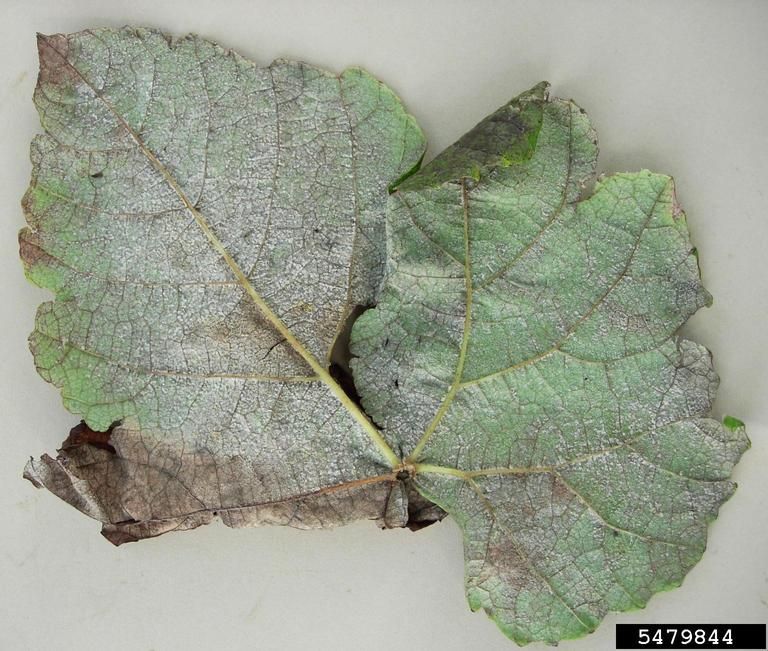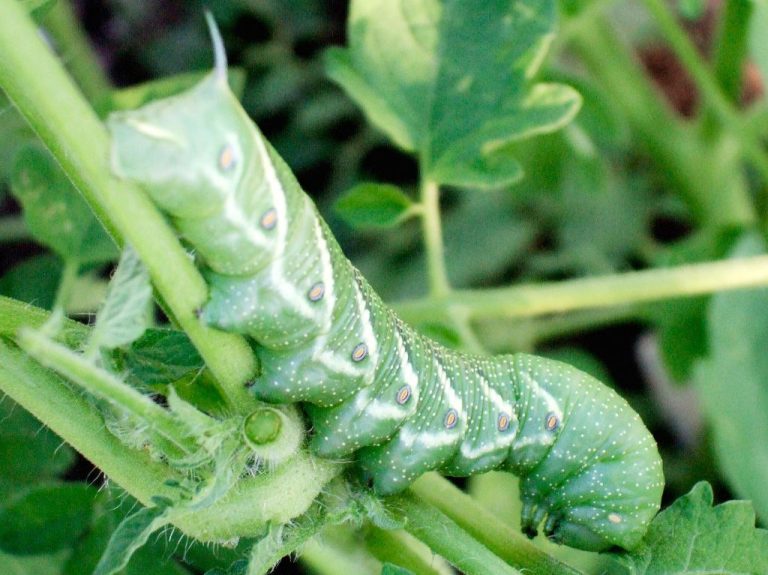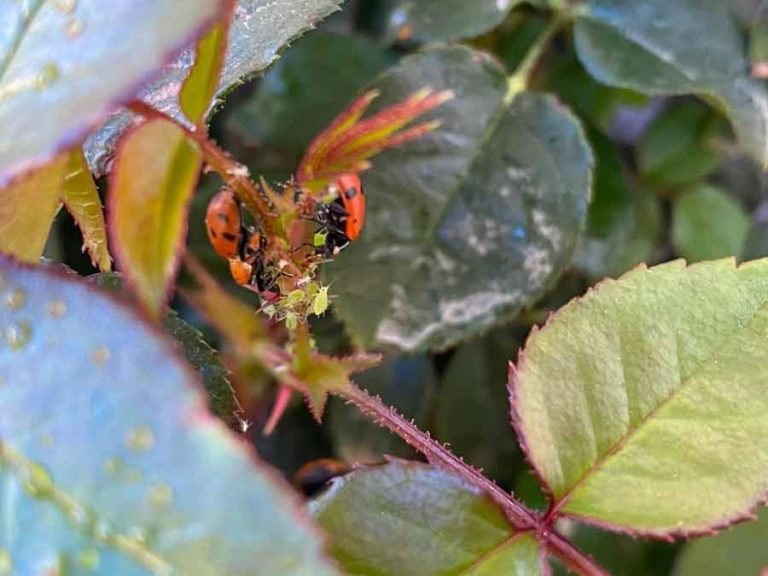Dealing With Cutworms: Protecting Your Seedlings And Transplants
What Are Cutworms?
Cutworms are the larvae stage of various species of night-flying moths such as the Miller Moth, Armyworm, and Dingy Cutworm Moth (UMN Extension, 2022). As larvae, cutworms are plump, soft-bodied caterpillars with smooth skin and grow up to 2 inches long. They come in various colors like gray, brown, black or striped. Cutworms get their name from their habit of cutting down young seedlings and transplants at the stem.
Cutworm larvae feed at night and during the day they curl up and hide under debris or in the top inch or two of soil near the bases of plants. This makes them difficult to spot until the damage is already done. There are around 30 species of cutworm moths in North America with overlapping geographic ranges, so cutworm problems can occur throughout the continent (GardenTech, 2022).
The Life Cycle of Cutworms
Cutworms begin life as eggs which are laid in the soil by adult cutworm moths in mid to late summer (August and September). The eggs hatch and the larvae emerge in the fall. The larvae feed on plant roots and foliage through the winter and early spring before pupating in early summer.
The larvae go through several growth stages called instars as they feed and mature. Cutworms have 5-7 instars typically. Each instar period lasts 2-4 weeks. When the larvae are fully grown they burrow underground and transform into pupae. This pupal stage lasts 2-4 weeks. Then the adult moths emerge from the soil in late summer and the cycle repeats.
So the key stages in the cutworm life cycle are:
- Egg – Laid in soil by adult moths in late summer
- Larva – Feeds on roots and foliage from fall through spring with 5-7 growth instars
- Pupa – Transforms underground for 2-4 weeks in early summer
- Adult moth – Emerges in late summer to mate and lay eggs
During the larval feeding stage is when most plant damage occurs. Knowing the life cycle helps determine the best times for control measures against cutworms in gardens and agriculture. For more details, see the Terminix article on The Cutworm Life Cycle.
Types of Cutworms
There are several common species of cutworms that can damage plants and crops:
- Black cutworms – This is one of the most destructive species. The larvae are gray with a greasy appearance and can grow over 1.5 inches long. They chew through stems at soil level and are a major pest of vegetable crops like corn, beans, tomatoes, and potatoes (source).
- Variegated cutworms – These cutworms vary in color from brown to gray or orange. They grow up to 1.5 inches long and climb plants at night to feed on leaves, buds, and shoots. They are a pest of many vegetable crops as well as fruit trees and ornamental plants (source).
- Bronzed cutworms – The larvae of this species grow up to 1.25 inches long and are identified by their shiny bronze or brown color. They feed at night and hide under debris or soil during the day. These cutworms damage young seedlings by cutting them off at soil level (source).
- Dingy cutworms – These gray or brown larvae grow up to 1.5 inches long. They feed on turfgrass as well as vegetable and field crops. The larvae feed at night and curl up into a ball when disturbed (source).
- Glassy cutworms – The larvae of this species are semi-transparent gray and grow to about 1 inch long. They hide in the soil during the day and emerge at night to feed on young transplants, often cutting them off at ground level (source).
There are many other less common species as well, but these are some of the major cutworm pests in gardens, lawns, and farms.
How Cutworms Damage Plants
Cutworms are voracious leaf and stem feeders that can quickly defoliate and destroy seedlings and transplants. They use their strong jaws and mandibles to chew through stems at or below the soil surface, sometimes chewing entirely through the stem to cut the plant off at ground level. This damage often kills the plants.
Cutworms feed at night and hide in the soil or under debris during the day. They will climb up plants to feed on leaves, buds, flowers, and fruits in addition to stems. Cutworms may drag cut leaves into their burrows or leave behind ragged, irregular edges where they have fed.
According to the University of Minnesota Extension, cutworms are especially damaging to seedlings and transplants since they lack extensive root systems and secondary stems at this stage to recover from cutworm damage [1]. Cutworms can quickly defoliate young vegetable and flower seedlings, leading to wilting and plant death.
The University of California Integrated Pest Management Program notes that cutworms are most problematic in spring and early summer when populations are high from overwintering larvae. They advise checking for cutworm damage to vulnerable seedlings and transplants during these periods [2].
Preventing Cutworm Damage
There are several effective methods for preventing cutworm damage to vegetable and flower seedlings:
Putting protective collars around seedlings when transplanting them can prevent cutworms from attacking the stems. Collars can be made from cardboard, tin cans with both ends removed, or any other stiff material. Push the collars an inch or so into the ground to prevent larvae from going under them (Source).
Tilling the soil in late fall or early spring exposes cutworm larvae and pupae to predators and the elements. This can reduce their numbers for the next growing season. Removing weeds, mulch, grass, and crop debris also eliminates hiding places for cutworms (Source).
Interplanting flowers like marigolds with vegetables can deter cutworms. The scent confuses their ability to find the vegetable plants. Marigolds also attract beneficial insects that prey on cutworm larvae (Source).
Sprinkling diatomaceous earth around the base of seedlings creates a sharp, scratchy barrier that cutworms avoid crossing. Replace DE after watering or rain (Source).
Natural Cutworm Controls
There are several biological methods that can help control cutworm populations without using harsh chemicals.
Encouraging birds to frequent your garden can provide natural pest control. Birds like robins, catbirds, and thrashers will eat cutworm larvae. Putting up bird houses and bird feeders can attract more birds to your yard.
Beneficial nematodes like Steinernema species can provide biological control of cutworms. The nematodes seek out and infect cutworm larvae, killing them within 48 hours. The nematodes can be purchased and applied to the soil according to package directions.
Diatomaceous earth sprinkled around plants can deter cutworms. The powdery substance irritates the cutworms when they crawl over it. Be sure to apply a food-grade diatomaceous earth product.
Bacillus thuringiensis (Bt) is a natural bacterium that specifically targets caterpillars like cutworms. Find Bt products formulated for caterpillars and apply according to label instructions. The bacteria must be ingested to be effective.
Handpicking cutworm larvae from plants is an organic control option for small infestations. Check plants at night when cutworms are most active. Crush picked larvae or drop them into soapy water.
Chemical Cutworm Controls
While natural and biological methods are preferred, sometimes chemical insecticides are necessary to control severe cutworm infestations. There are several effective synthetic insecticide options for controlling cutworms.
Pyrethroids such as bifenthrin, cyfluthrin, deltamethrin, lambda-cyhalothrin, and permethrin are effective at controlling cutworms. These can be applied at planting as a soil drench or sprayed over foliage later in the season. Always follow label directions carefully. According to the MSU Extension, synthetic pyrethroids provide excellent cutworm control when applied at planting https://www.canr.msu.edu/ipm/diseases/cutworm?language_id=#Chemical.
Another option is chlorantraniliprole, which is sold under brand names such as Coragen and Acelepryn. This insecticide can be sprayed on foliage or applied to soil. It is effective at very low application rates. One study found chlorantraniliprole provided 100% control of black cutworms https://solutionsstores.com/cutworm-control.

When using any insecticide, carefully follow safety precautions and application guidelines on the label. Only apply the minimum amount needed to achieve control. Avoid spraying pollinators and beneficial insects. Never apply insecticides over or near water sources. Always wear protective equipment when mixing or spraying pesticides.
Cutworm Monitoring and Trapping
Cutworms are tricky pests to monitor because they feed at night and hide during the day. Checking your plants regularly for damage is important to detect cutworm infestations early. Look for wilted, cut-off, or missing seedlings. You may also find cutworm larvae curled up near the bases of damaged plants.
One monitoring strategy is to use cutworm traps, such as cardboard squares, wooden boards, or burlap fabric laid on the ground near plants. The cutworms will hide under these traps during the day, allowing you to spot and destroy them. Traps are most effective when placed near seedlings or transplants that are most vulnerable to cutworm damage. Check traps daily and replace as needed.
Another option is to scout for cutworms at night with a flashlight. Their eyes will reflect the light, making them visible. You can also use a soap flush where you mix a few teaspoons of lemon-scented dish soap per gallon of water and pour it on areas where cutworms live. This irritates them and drives them to the surface so you can spot them.
No matter the monitoring method, be diligent and thorough in order to detect cutworms early before extensive damage occurs. Quick identification and removal can nip infestations in the bud. See https://ipm.ucanr.edu/agriculture/cucurbits/cutworms/ and https://extension.umn.edu/yard-and-garden-insects/cutworms for more cutworm monitoring strategies.
Recovering From Cutworm Damage
If your plants have been damaged by cutworms, there are several things you can do to help them recover and continue growing:
Remove any severely damaged leaves or stems. Use clean, sterilized pruners or scissors to trim off any parts of the plant that are dead or mostly eaten. This will prevent decay and disease.
Check the roots and soil. Gently lift the plant out of the soil and inspect the roots and surrounding area for any cutworms still present. Remove any cutworms and loosen up the root ball if it was damaged. You may need to repot the plant into fresh soil if the roots were heavily affected.
Provide supports. Use plant stakes or soft plant ties to support any weakened or damaged stems and leaves so the plant can continue photosynthesizing.
Fertilize lightly. A mild, balanced fertilizer can help stimulate new growth after damage. But go easy, as too much fertilizer on an already stressed plant can do more harm.
Monitor for signs of shock. After severe damage, plants may appear wilted or stressed. Make sure to keep them well watered and out of direct sun until they recover. Transplanting to a shadier spot can help reduce further stress.
Be patient. It takes time for plants to generate new roots and leaves after such an assault. But with proper care, most can make a full comeback within a few weeks. Just keep tending them and watch for new growth.
You can find more tips for helping plants recover from cutworm damage at [https://extension.umn.edu/yard-and-garden-insects/cutworms].
Avoiding Cutworm Problems Next Season
There are several effective ways to help prevent cutworm damage from occurring again next year:
Remove any weeds, grass, and plant debris from the garden in fall or early spring. This eliminates places for adult moths to lay their eggs (University of Minnesota Extension).
If you had issues with cutworms previously, consider applying an insecticide like Bacillus thuringiensis (Bt) or spinosad in early spring before planting. This can help kill young cutworm larvae before they damage crops (University of New Hampshire Extension).
Use floating row covers over seedlings and transplants, securing the edges with soil or rocks. This provides a physical barrier that prevents moths from laying eggs and larvae from feeding on plants.
Put collars around the base of seedlings and transplants when planting them. Collars can be made from cardboard, aluminum foil, or other materials. These prevent cutworms from climbing onto and damaging the plants.
Monitor for cutworm activity with traps early in the season. This allows you to detect and control infestations before major crop damage occurs.
Promptly remove and destroy any cutworms found feeding on plants. Early detection and removal can prevent populations from multiplying.
Encourage natural predators like birds, ground beetles, and parasitic wasps which help control cutworm populations.






